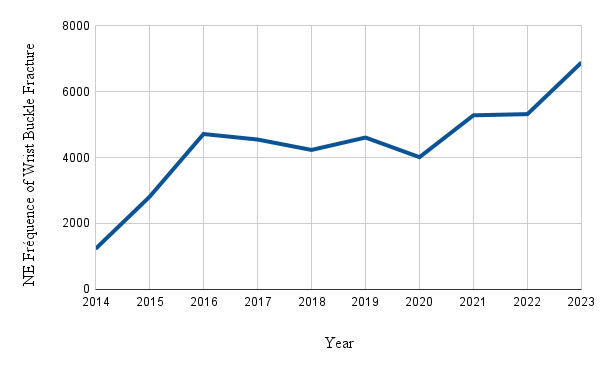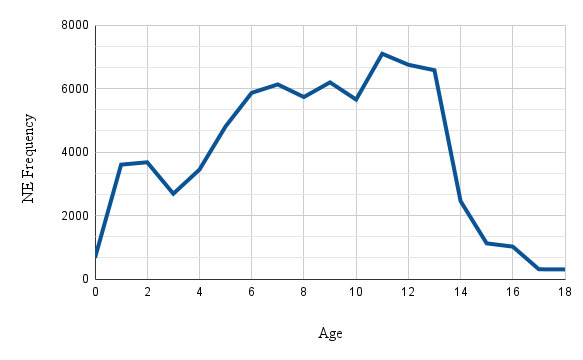Emergency Medicine 11
Session: Emergency Medicine 11
528 - Epidemiology of Buckle Fractures Among Youth: An Analysis of National Injury Data from 2014 to 2023
Monday, April 28, 2025
7:00am - 9:15am HST
Publication Number: 528.4892
Charu Jain, Icahn School of Medicine at Mount Sinai, New York, NY, United States; Uma Balachandran, Icahn School of Medicine at Mount Sinai, New york, NY, United States; Sheena Ranade, Icahn School of Medicine at Mount Sinai, New York, NY, United States

Charu Jain, BA (she/her/hers)
Medical Student
Icahn School of Medicine at Mount Sinai
New York, New York, United States
Presenting Author(s)
Background: Buckle fractures are extremely common injuries that occur almost exclusively among children, and often present to emergency departments.
Objective: The aim of this study was to evaluate the incidence of buckle fractures among youth presenting to emergency departments (EDs) in the United States (US) from 2014-2023. Epidemiologic studies of this common pediatric fracture could inform more targeted prevention measures and better understanding of affected patient demographics.
Design/Methods: All data analyzed in this study was extracted from the National Electronic Injury Surveillance System (NEISS), a publicly available database representing approximately 100 US EDs. NEISS was queried for all fractures in patients 0-18 years old. Cases were only included in this study if the NEISS narrative explicitly described buckle fractures . Queries were limited to fractures from January 1, 2014 to December 31, 2023.
Results: 243,370 pediatric fractures presented to US EDs from 2014-2023, which extrapolates to a National Estimate (NE) of 6,195,546 across the study period. Out of this data set, 2,853 cases were defined as ‘buckle fractures’, extrapolating to an NE of 74,068 buckle fractures. The most commonly affected body part was the wrist (NE: 43,614, 58.9% of all buckle fractures), which increased significantly over the study period (p=0.002, β=0.848, 95% CI: [207.722, 640.714]) (Figure 1). The most common mechanism of injury were jungle gyms (NE: 7,650, 10.3%), followed by trampolines (NE: 5,096, 6.9%), bikes (NE: 4,969, 6.7%), and football (NE: 4,030, 5.4%). Males sustained more injuries (NE: 43,587, 58.8%) The frequency of buckle fractures showed a qualitative upward trend until age 11-12, with a prevalent drop in the number of cases in older adolescents (Figure 2).
Conclusion(s): Pediatric buckle fractures are extremely common, especially in the wrist. Mechanisms of injury such as jungle gyms and trampolines yielded higher frequencies of fracture than sports. Future research should be focused on implementing stricter guidelines around recreational and playground equipment, especially in younger children. This study emphasizes the increasing amount of buckle fractures in the wrist in children. Although these fractures are generally less severe than other injuries, they cause temporary disability and discomfort. Understanding of the mechanisms of injury and trends of buckle fractures may better inform prevention efforts.
FIGURE 1: Incidence of buckle fractures in the wrist between 2014-2023, stratified by year.

FIGURE 2: Incidence of buckle fractures, stratified by age.


